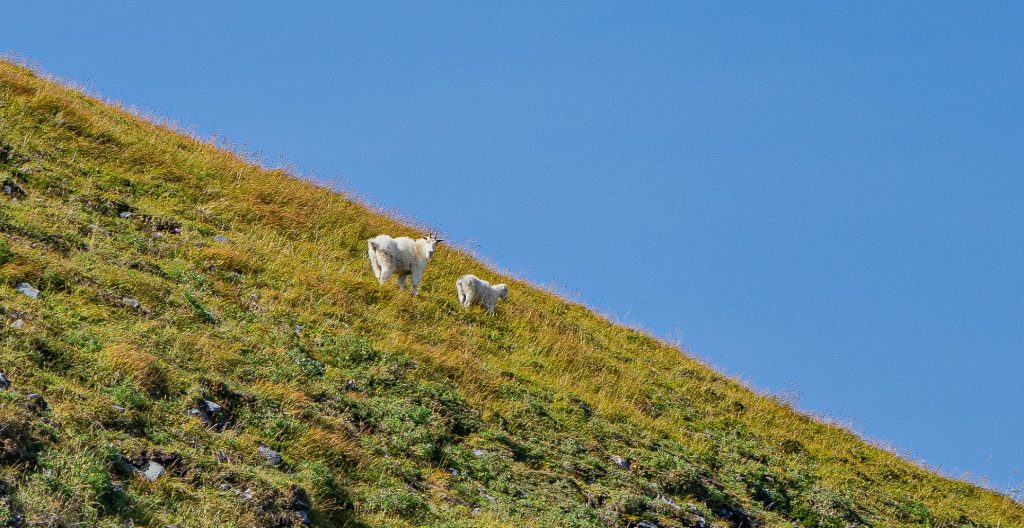Mountain Goats – Alpine Sentinels of Climate Change
Categories:
Tucked away in the nooks and crannies of British Columbia’s mountain ranges is a symbol of the alpine. White as the snow-capped peaks, the mountain goat (Oreamnos americanus) is an iconic mountain species of British Columbia. Approximately half of the world’s mountain goats reside within the province, inhabiting the jagged alpine slopes. Owing to the remote regions in which they live, studying mountain goats is a challenging endeavor. As a result, scientific estimates of the abundance and distribution for many populations of goats are lacking despite their cultural importance to local First Nations and status as a ‘big game’ animal.
Scientific studies of mountain goats in their coastal range are even scarcer, but the Kitasoo/Xai’xais First Nation have been observing and interacting with the goats on this landscape for millennia. Observations of mountain goats by the Kitasoo/Xai’xais have been declining. In some areas, mountain goats were commonly seen less than a decade ago, but now they haven’t been seen. To better understand the ecology of this mountain animal, the Kitasoo/Xai’xais First Nation and the Raincoast Applied Conservation Science Lab at the University of Victoria have partnered with the BC Parks Living Lab Program to launch a new research program on coastal mountain goats.

This research program uses helicopter-based surveys to systematically search for the presence (or absence) of mountain goats across 400 km2 study area. By gathering information about where mountain goats typically live, the team can better understand the abundance of goat populations in the area and gain insight into population trends over time. Furthermore, the team can begin to make statistical comparisons between the places where goats are found and not found, which gives us insight into what habitats are most important for goats in the study area. Such information about abundance and distribution provides key components comprising conservation and management plans for this species.
More broadly, mountain goats serve as an excellent indicator of the effects of climate change. Alpine regions are profoundly affected by climate warming. Such warming might be problematic for mountain goats, given that they seek refuge from summer heat by climbing to higher altitudes. Higher temperatures in alpine areas may have direct effects by inducing heat stress in goats, which are adapted to cold temperatures. Higher temperatures may also have indirect effects, particularly with food. Along their upward migration, goats forage on nutritious grasses and forbs that begin to grow as the snow melts. In a warmer climate, these plant foods might begin to grow earlier in the spring. If goat migration (and birthing of juveniles, or ‘kids’) occurs at the same times and in the same places as in recent history, there may be less nutritious food available – an ecological phenomenon of concern called trophic mismatch. More detailed work next season might investigate these possibilities.

With the first season of helicopter surveys completed in August 2019, we are beginning to analyze the data that have been collected. The initial results suggest a very low density population of goats relative to other areas in the province, which is consistent with the observations of the Kitasoo/Xai’xais. The results from this research program will be relevant to many: from the direct stewardship actions of the Kitasoo/Xai’xais, to province-wide management programs, and to the global scientific community. A sound understanding of mountain goat ecology will inform stewardship aimed at ensuring this quintessential alpine species continues to roam B.C.’s coastal mountains.
For more information about the BC Parks Living Lab Program, visit http://www.env.gov.bc.ca/bcparks/partnerships/living-labs/
Tyler Jessen is a PhD student in the Raincoast Applied Conservation Science Lab at the University of Victoria and a Biologist with Raincoast Conservation Foundation.




